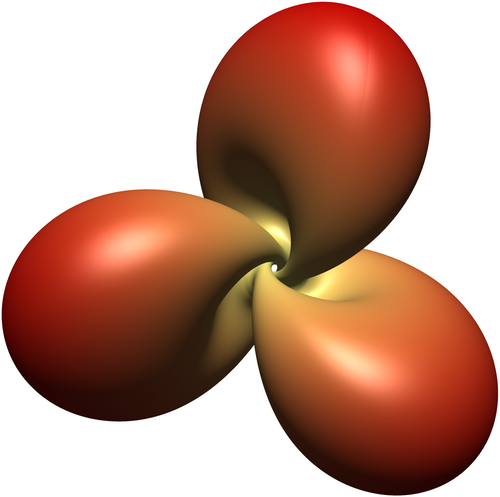The Hopf torus of the tennis ball curve
In a previous post I explain the construction of the Hopf torus of a closed curve on the sphere, and I show the rendering for a certain spherical curve.
On Paul Bourke’s site, I’ve found another spherical curve for which the corresponding Hopf torus is prettier.
This spherical curve is defined by the three coordinates \[ \begin{cases} p_1(t) & = & \sin\bigl(\pi/2 - (\pi/2 - A) \cos(t)\bigr) \cos\bigl(t/n + A \sin(2t)\bigr) \\ p_2(t) & = & \sin\bigl(\pi/2 - (\pi/2 - A) \cos(t)\bigr) \sin\bigl(t/n + A \sin(2t)\bigr) \\ p_3(t) & = & \cos\bigl(\pi/2 - (\pi/2 - A) \cos(t)\bigr) \end{cases} \] for \(t\) varying from \(0\) to \(2n\pi\).
This is this curve:
For \(n=2\) and \(A \approx 0.44\) it looks like the curve appearing on a tennis ball.
For \(n=3\) and \(A = 0.44\), here is the correspondiing Hopf torus (rendered with Asymptote):

The parameter \(n\) defines the number of lobes of the torus. You can play with it below.







